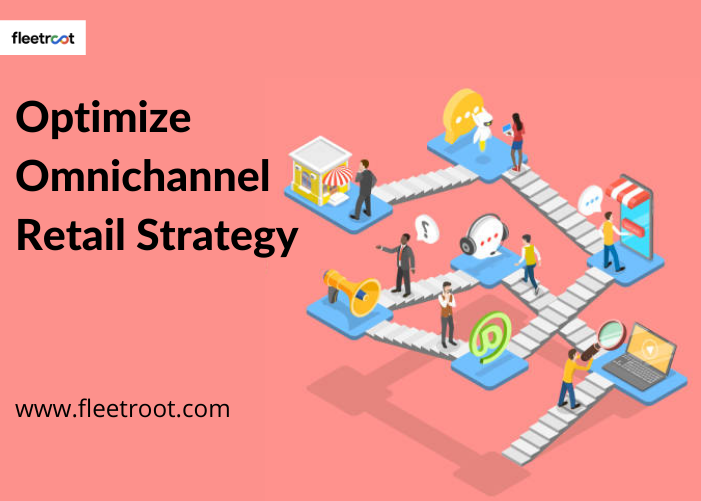Summary
In addition to buying from the traditional physical stores, a modern consumer has options that include eCommerce, social media, social commerce, and quick-commerce. Well, the list is only growing! For retailers, suppliers, and manufacturers, this means maintaining an omnichannel retail presence. Without it, you will be losing out on opportunities to not only interact and sell to your target buyers but also to achieve the critical metric of business success, i.e. customer satisfaction.
I. What does Omnichannel retail strategy mean?
An omnichannel retail strategy means a company is using multiple channels to sell its products, including physical outlets, online marketplaces, and social channels (e.g. social commerce), to name some.
However, there are (often subtle) differences between multi-channel, omni-channel, and single-channel:
1. Omnichannel retail: Delivering a consistent brand experience across all channels that you use; building lasting relationships with your customers through these multiple touch-points is the cornerstone of good omnichannel retail.
Ideally, your business model, data integration, and systems must be optimized by using an omnichannel retail strategy. Recent studies show that 90% of consumers want the convenience of one, and the average touch-points between a consumer and a brand has risen to six today, up from just two at the beginning of this millennium!
2. Multichannel retail: Like omnichannel, multichannel retailing also uses multiple channels to sell products. Unlike omnichannel, though, a multichannel retail experience tends to be disjointed without a single, unified voice across channels.
Multichannel is more focused on optimizing all touch-points as against creating a singular, consistent brand experience e.g. its marketing communication, branding, creative tone (etc.) tends to lack consistency across channels
3. Single-channel retail: As the name suggests, these retailers sell their goods through just a single channel. For example, either just the Amazon marketplace or a retail chain.
II. Different types of omnichannel
Several channels exist for deploying omnichannel retailing.
- Online marketplaces e.g. Amazon, Walmart
- Search e.g. Google ads
- Social commerce e.g. Facebook, Instagram
III. Importance of omnichannel retail.
Driven by changes in consumer behavior, omnichannel retailing is now non-negotiable for success. Given below are some key elements that make it invaluable:
1. Be where your customers are: The linear habits of customers are a thing of the past – today, there are myriad new touchpoints in the consumer universe for new ways of discovering brands, transacting with them, and points-of-sale. Google search, Amazon, Facebook – the list is endless.
The hardware options have exploded too – they may find you on a mobile device, a laptop, or a wired LED TV. Simply put, you need to be available in all these places!
2. Be differentiated: By using a well-researched approach across consumer needs, your offerings vis-à-vis competitors, sales and distribution channels, product portfolio, messaging, and advertising you must ensure that your product and brand promise adopts a strong and sustainable marketplace position.
3. Analytics: Analyzing and understanding your brand data is the first step to conducting an honest SWOT analysis. This, in turn, helps you identify market opportunities, your available resources, and how best you can – or, cannot – exploit them.
4. Tailored offering: By extension of the point above, since an omnichannel retail approach generates a lot of data at various levels of operation, firms are able to mine it deeply and draw meaningful insight. This helps you in personalizing your value propositions and messaging accordingly, making your customers feel like you’ve “curated” offerings for them.
IV. Six best practices for developing an omnichannel strategy
Your omnichannel strategy will be based on the unique needs of your business:
1. Market segmentation: The objective is to create homogenous groups within your addressable target market that display common characteristics so that you can bunch them together and tailor your offering to them.
Also known as customer segmentation, it allows you to “position” your offering to each such unique group(s) by adjusting your marketing mix accordingly. Common elements are demographic value (age, income, location) and psychographic values (generation, attitudes, interest, likes/dislikes, beliefs, online behavior)
2. Use appropriate channels: Based on your product or service, target market, size, product price (etc.) you need to select the correct channel mix. Unless you are an absolute “new to the world” product innovation, you will have reference points of the channel mix of similar/competing products and can use them as a starting point.
Offline, online, intensive, selective – all of it will depend on your marketing and strategy mix. For example, a product with a very high ticket price (e.g. a car, or a unique artifact) will surely need a physical store where the customer can inspect the product.
3. Map customer life cycles: Identifying your customer life cycle is very important. It provides a window into your consumer’s mind i.e. the why, what, when, and how of their behavior.
You will gain insight into what works and what doesn’t. Customer life-cycle journeys aren’t linear and are constant tradeoffs using their very own cost-benefit ratio, including the point-of-sale (PoS) that is most convenient for them.
4. Customer support: Just like an omnichannel retail strategy, your customer support must match up. In today’s times, customers expect all options including phone, email, chat-bots, contact-us buttons on website (etc.) to be available for their convenience.
5. Automation & technology: Using a cross-channel mix requires a highly efficient inventory management system with a unified view. You need to coordinate multiple customer orders, and their unique details, and work with multiple fulfillment partners, teams, and vendors to fulfill them. Your tools for syncing data and accounts across Google, Walmart, Amazon, etc. must use the latest tech stacks.
6. Testing: Testing is a process that is continuous – it isn’t a one-time activity! Therefore, you must test regularly, and everything. For example, content, offers, pricing – even your larger premises (e.g. segmentation) must be tested regularly to check for changing trends.
Also, you should try and automate as much of the testing as possible as you do more of it. This not only helps save time and money but provides insights in real-time, 24*7.
Conclusion: As clearly evident, customers today expect – demand! – an omnichannel retail presence from their brands. Retailers must use all available methods of data, insight, and technology like last mile delivery software to satisfy their customers if they are to develop and maintain a loyal customer base that will return for repeat purchases.




